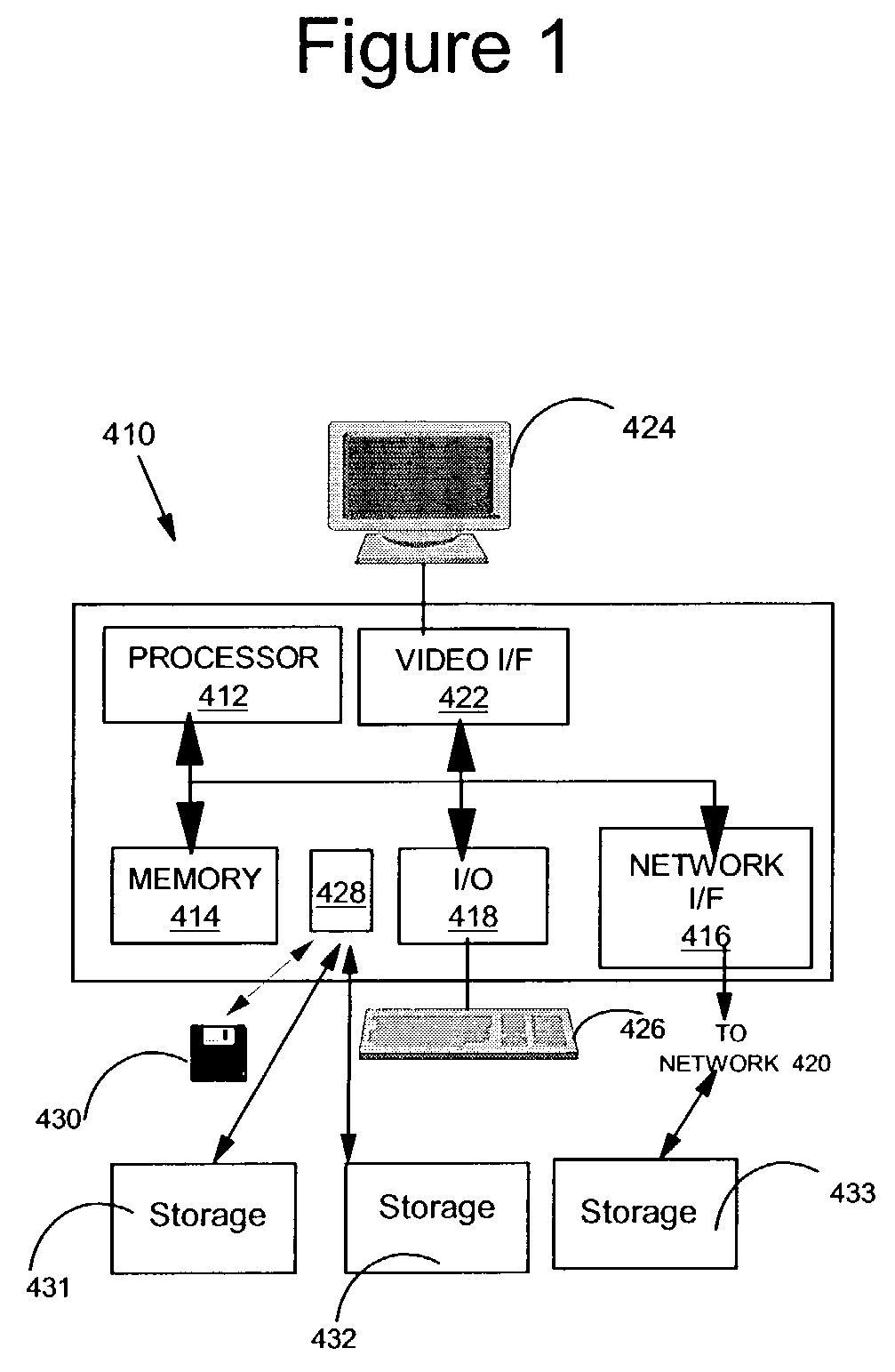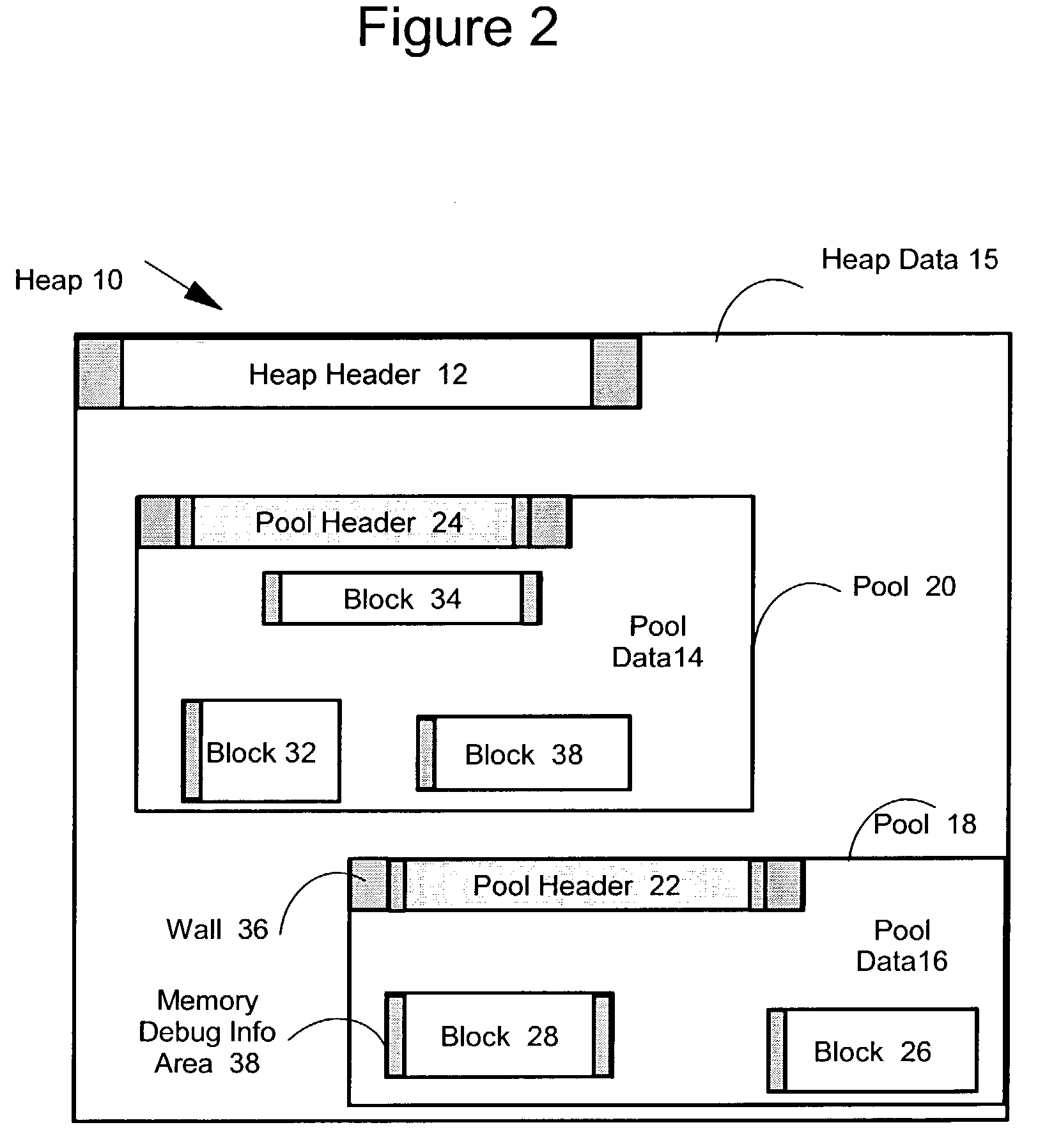Defensive heap memory management
- Summary
- Abstract
- Description
- Claims
- Application Information
AI Technical Summary
Benefits of technology
Problems solved by technology
Method used
Image
Examples
Embodiment Construction
[0020]In a preferred embodiment, there is provided a method, system and article for allocating memory by a memory manager of a data processing system, directed to defensive dynamic management of data memory. Emphasis is placed on efficient management of addressable computer memory, protection of heap control data structures and reliable detection, at run-time, of various forms of memory corruption. Within this context, a memory manager is described as being incorporated into an operating system of a conventional computer. However, a memory manager within the context of embodiments of the invention may also be suitable for managing other forms of memory, such as disk memory, and hence may be implemented as part of memory controllers of various memory units, programming language runtime libraries, and the like, in places other than general purpose computer. The present memory manager may also be used for shared memory heap management, such as managing memory that is shared between thr...
PUM
 Login to View More
Login to View More Abstract
Description
Claims
Application Information
 Login to View More
Login to View More - R&D
- Intellectual Property
- Life Sciences
- Materials
- Tech Scout
- Unparalleled Data Quality
- Higher Quality Content
- 60% Fewer Hallucinations
Browse by: Latest US Patents, China's latest patents, Technical Efficacy Thesaurus, Application Domain, Technology Topic, Popular Technical Reports.
© 2025 PatSnap. All rights reserved.Legal|Privacy policy|Modern Slavery Act Transparency Statement|Sitemap|About US| Contact US: help@patsnap.com



